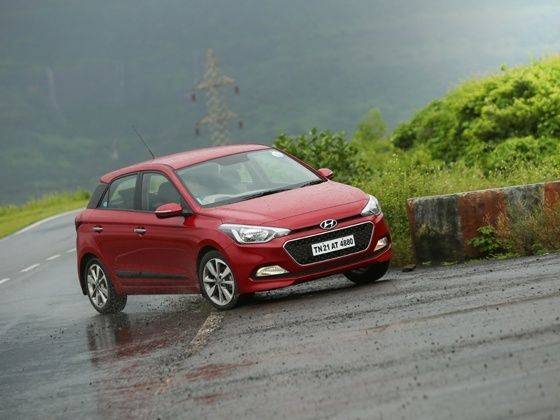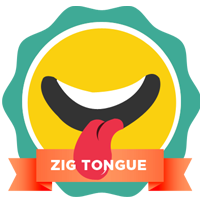MY A MOVIES NAME
rabipur Novartis Vaccines and Diagnostics GmbH & Co. KG, Germany
i don't know it releases date
coming soon! all version !
Composition
One vial of powder and solvent for solution for injection for one immunisation dose
(1 ml) contains: inactivated rabies virus (strain flury LEP), potency
>
2.5 IU.
Host system: primary chicken fibroblast cell cultures
Other ingredients:
TRIS-(hydroxymethyl-)aminomethane, sodium chloride, EDTA (Titriplex III), potassium-
L-glutamate, polygeline, saccharose, water for injections
Presentation and contents by weight, volume or number of items
Powder and solvent for solution for injection
After dissolution of the white lyophilisate (powder), a clear colourless solution is
obtained.
Please find enclosed our full range of pack/container sizes. Please note that some items
listed may not be available in all countries.
Pack contains:
– One vial of lyophilisate for one immunisation dose (1 ml)
– One ampoule containing 1 ml water for injections
Pack contains:
– One vial of lyophilisate for one immunisation dose (1 ml)
– One ampoule containing 1 ml water for injections
– One disposable syringe
Pack contains:
– Five vials, each with lyophilisate for one immunisation dose (5 x 1 ml)
– Five ampoules, each containing 1 ml water for injections
– Five disposable syringes
Pack contains:
– 30 vials, each with lyophilisate for 1 immunisation dose (30 x 1 ml)
Pack contains:
– 30 ampoules, each containing 1 ml water for injections
Disposable syringes are provided separately.
Substance or indication category
Vaccines
Name and address of the holder of the marketing authorisation
Novartis Vaccines and Diagnostics GmbH & Co. KG
PO Box 1630
D-35006 Marburg
Germany
Indications
Active immunisation against rabies.
a) Pre-exposure immunisation (preventative, prior
to exposure):
Immunisation prior
to possible infection with rabies, particularly for vets, veterinary
medicine students, animal keepers, hunters, forestry workers, animal handlers, butchers,
personnel in rabies research laboratories etc., or prior to visits to areas in which rabies
is endemic (rabies infected areas).
b) Post-exposure treatment (after
exposure):
Treatment after
contact with animals which are rabid or suspected to be rabid, or
after contact with an inoculated rabies carcass.
For further details, see enclosed tables.
Contraindications
a) Immunisation prior
to exposure
It is advisable to avoid pre-exposure (prophylactic) immunisation in individuals with
acute disorders requiring treatment.
If complications arise after vaccination, this should be considered a contraindication
for further administration of the same vaccine, until the causes of the complications
have been clarified.
In individuals with known allergy to one of the constituents of Rabipur, use of this
vaccine is contraindicated.
b) Treatment after
exposure
In view of the fact that rabies is a fatal disease, there are no contraindications to
immunisation after suspected exposure (see section "Special precautions for use").
Pregnancy and breast-feeding
No cases of harm attributable to use of this vaccine during pregnancy have been observed
to date in mothers or children.
It is not known whether Rabipur passes into breast milk.
OKGP G26 00479 (17984A)
1
Date of revision of the package leaflet
September 2006
Additional Information
This vaccine conforms to the World Health Organisation (WHO) requirements and
contains no preservative.
The antibody concentration achieved by the immunisation falls gradually; booster
doses are therefore required to maintain immunity.
All immunisations and all immunoglobulins administered should be entered by the
doctor, with the name of the preparation (proprietary name) and Lot. No., in the inter-
national immunisation record. Optimal immunity will only be conferred if the full im-
munisation schedule is completed.
4
RABIPUR
®
Active substance:
Inactivated rabies virus
Package leaflet
Exposure
category
I
II
III
Contact with a rabid or
suspected rabid*
wild or domestic animal
– Touching/feeding
animals, but clearly no
contact with their saliva;
patient's skin
undamaged prior to and
during contact
– Animal has nibbled or
licked exposed skin of
the patient
– Contact with saliva
– Superficial, non-
bleeding, scratches
made by the animal,
with the exception of
scratches on the head,
neck, shoulder region,
arms and hands
(see exposure grade III)
– All bites
– Bleeding scratches
– All scratches on the
head, neck, shoulder
region, arms, and hands
– Contact of patient's
mucous membrane with
animal saliva
(e. g. licking, spray)
Contact with an
inoculated animal
carcass
– Touching inoculated
carcass; skin intact
– Touching inoculated
carcass;
skin damaged
– Contact of
inoculated carcass
with mucous
membrane or fresh
skin wound
Treatment schedule
No treatment necessary.
In cases of uncertainty,
immunisation to be
administered as per
schedule B (Table 2)
Immediate treatment as
specified in schedule B.
In cases of uncertainty,
simultaneous administra-
tion of vaccine and immu-
noglobulin (active and
passive immunisation)
should be administed
as specified in schedule C
(Table 2).
If the animal proves to be
healthy after examination,
it is advisable to continue
treatment as in schedule A.
Check patient's immunity
against tetanus.
Initiate immediate simul-
taneous administration of
vaccine and immunoglo-
bulin (active and passive
immunisation) as specified
in schedule C (Table 2).
If the animal proves to be
healthy after examination,
it is advisable to continue
treatment as in schedule A.
Check patient’s immunity
against tetanus.
Type of exposure
Schedule A
Immunisation prior to
exposure
One injection of Rabipur
i.m. on days:
0, 7, and 21 or 28
Schedule B
Immunisation after exposure
One injection of Rabipur i.m.
on days:
0, 3, 7, 14, 28 (5-dose schedule)
or
One dose of Rabipur to be
given into the right deltoid
muscle and one dose into the
left deltoid muscle on day 0;
and one dose to be applied
into the deltoid muscle on
days 7 and 21 (2-1-1 regimen).
In small children the vaccine is
to be given into the thighs.
Schedule C
Simultaneous prophylaxis
after exposure
Give Rabipur as in schedule B +
1 x 20 IU/kg BW human rabies
immunoglobulin** or 40 IU/kg
BW equine rabies immuno-
globulin simultaneously with
the first dose of Rabipur.
If no rabies immunoglobulin
is available at the time of the
first vaccination, it must be
administered no later than 7
days after the first vaccination.
* Persons who have received less than three immunisation doses, or a vaccine of
doubtful potency or origin
** Observe manufacturer’s instructions!
(Based on the 1997 WHO guidelines)
* All animals exhibiting abnormal behaviour in an area which has been officially decla-
red as rabies endemic area must be considered potentially rabid. The corpses of rabid
animals can also transmit rabies.
Note:
Where indicated, prophylactic immune treatment should be given as soon as
possible!
Table 2: Pre-exposure immunisation and post-exposure treatment of indivi-
duals with no or inadequate* immunity
Table 1: Appropriate rabies treatment based on different categories of exposure
pb17984_Rabipur_26.qxd 08.12.2006 10:07 Seite 1 (Schwarz/Process Black Bogen)
Product Summary File


























